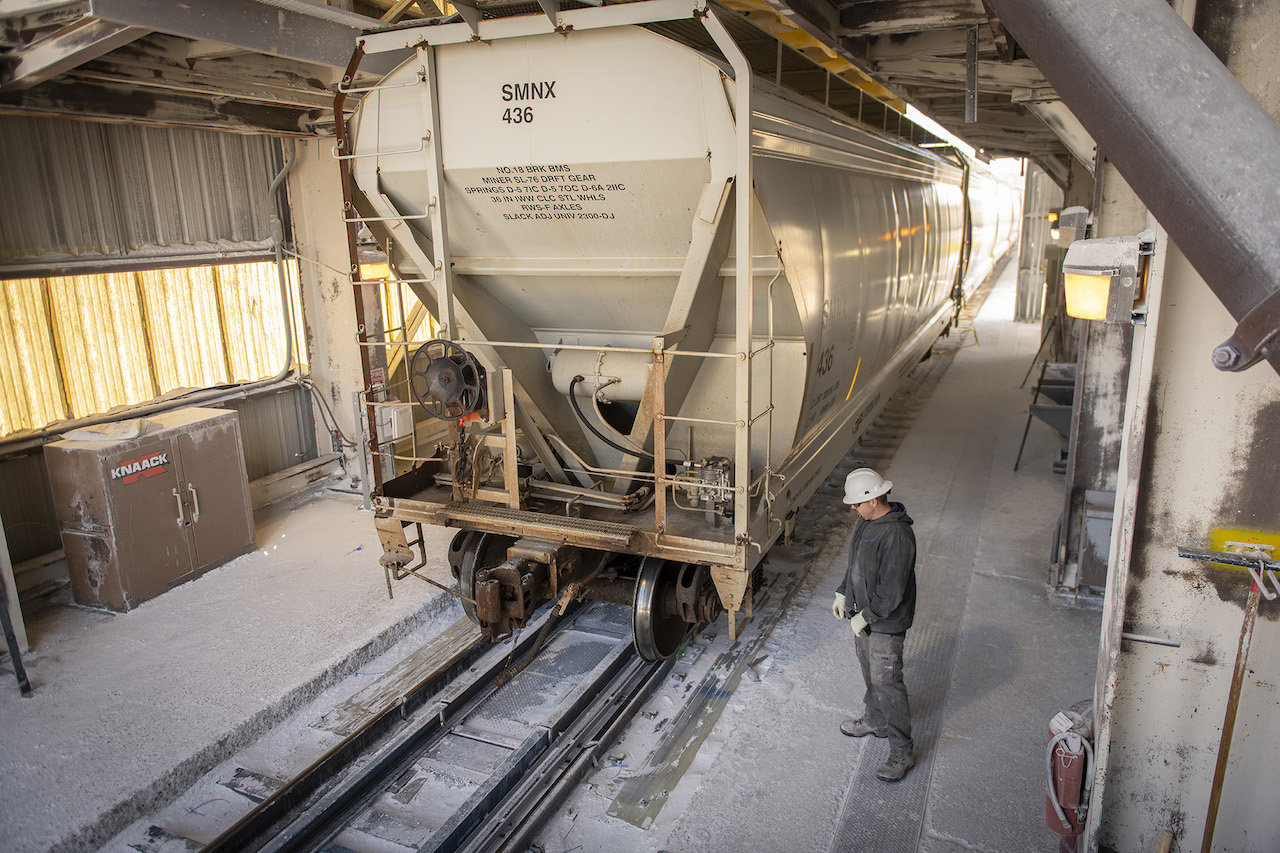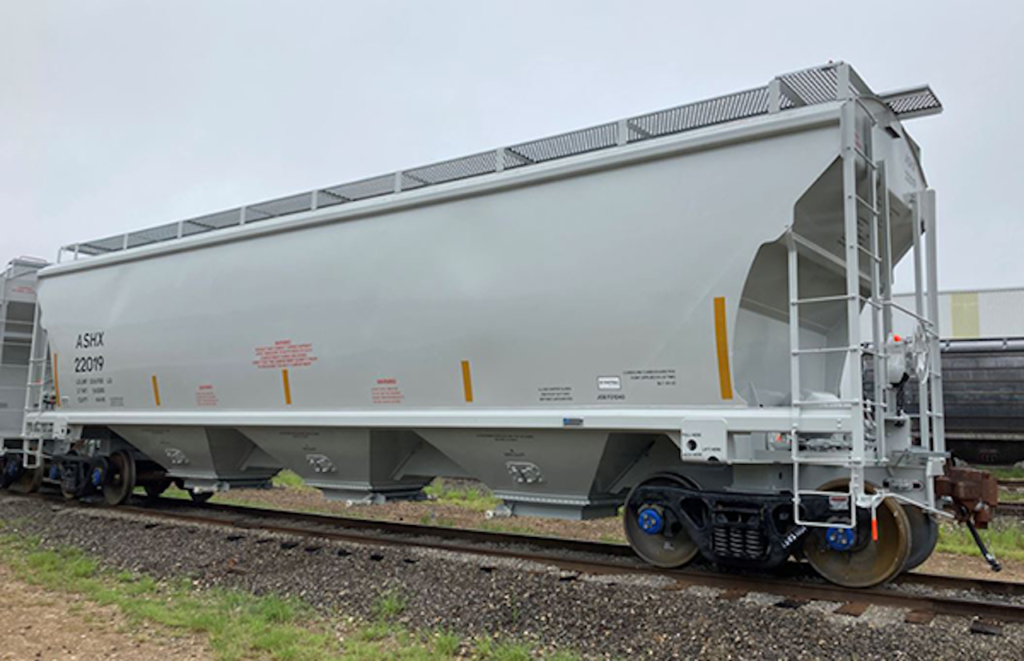
Solvay, UP Partner to Reduce Soda Ash Carbon Footprint
Written by Carolina Worrell, Senior Editor
Solvay recently embarked on a $92 million project to invest in purpose-built railcar fleet over the next three years.
Belgium-based chemical company Solvay announced Aug. 26 that, with Union Pacific (UP), it has invested in a purpose-built railcar fleet to reduce the carbon footprint of every railcar of soda ash (or sodium carbonate), “the 10th most consumed inorganic compound in the world and a base ingredient for lass and detergent manufacturers,” shipped from the company’s Green River, Wyo., plant.
“Solvay is constantly shipping out vast volumes of this crucial commodity and has always relied on trains to do it,” the company stated. “As our group multiplies efforts and initiatives to reduce the environmental footprint of soda ash production, making that rail transport less carbon-intensive too makes perfect sense,” added Solvay, which earlier this year increased its production capacity by becoming the sole operator of the Green River site and recently embarked on a $92 million project to invest in a purpose-built covered hopper fleet over the next three years. According to a public record, 200 of the railcars were leased from MassMutual Asset Finance LLC based in Foxborough, MA.
Solvay adds that, simultaneously, it is also committed to reducing the greenhouse gas (GHG) emissions of the plant by phasing out coal usage, an effort that, according to the company, has already enabled a 112 kiloton/year reduction of CO2 emissions as of 2021.

“Our impact on the environment doesn’t begin and end at our plant, and we need to assure we are doing everything we can do to have a positive environmental impact upstream and downstream, as well,” said President of Solvay’s American Soda business Brian Kebart. “We are proud to have invested in railcars that offer a greater CO2 reduction than the industry standard. This will not only help us in our emissions reduction journey, it is also of great value for our customers who require raw materials with the lowest possible carbon footprint.”
UP, which hauls Solvay’s soda-ash filled railcars to the cities and harbors where the company’s customers await them, is also taking measures to reduce its own environmental footprint, the company said.
UP announced on Aug. 19 that it has partnered with Progress Rail, a Caterpillar company, to help reduce locomotive GHG emissions. Its goal, the Class I says, is to reduce GHG emissions by 26%, against a 2018 baseline, by 2030 and, ultimately, reach net zero by 2050. UP’s strategy also includes improved operational efficiency and a billion-dollar deal with Wabtec to modernize 600 locomotives.

“We are currently working with manufacturers to increase the proportion of renewable fuels used by our locomotives, from about 4% today to eventually 20%,” said UP Vice President–Industrial, Marketing and Sales Jacque Bendon. “We also recently acquired the world’s largest carrier-owned fleet of battery-electric locomotives, which we will be testing in L.A. and North Platte, Neb.”
Solvay and UP, the railroad says, are on the same page when it comes to transporting goods while emitting less CO2. “We love it when our customers focus on becoming more environmentally friendly, because we can support each other in our efforts,” added Jacque. “Many of our customers today are tackling their emissions, but investing in more fuel-efficient cars like Solvay has, that’s quite cutting-edge.”
According to Solvay, both companies are “hard at work overcoming their respective challenges: disposing of sufficient horsepower to haul kilotons of bulky merchandise across a continent while reducing fuel consumption for one and running heavy-duty industrial activities while causing less emissions for the other.”
But most important, Solvay adds, both Solvay and UP have also “understood that when it comes to tackling emissions, small steps–whether investing in more energy-efficient railcars or improving operational efficiency–matter as much as the grand gestures.”



